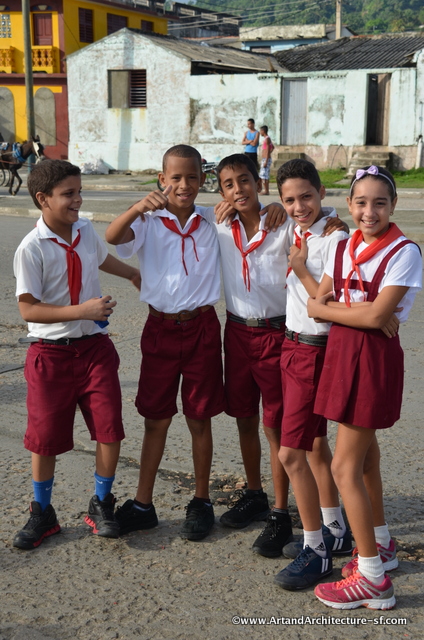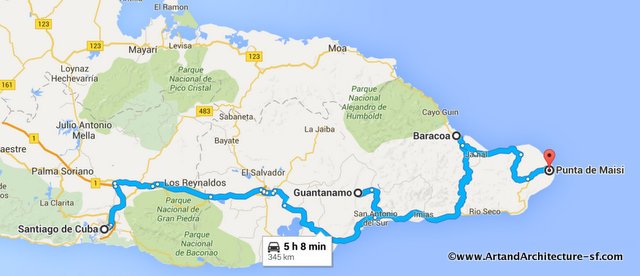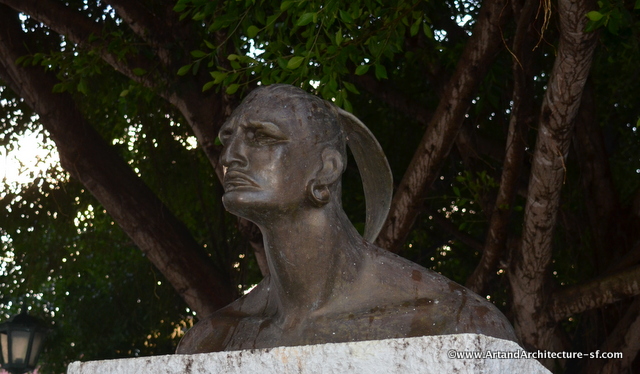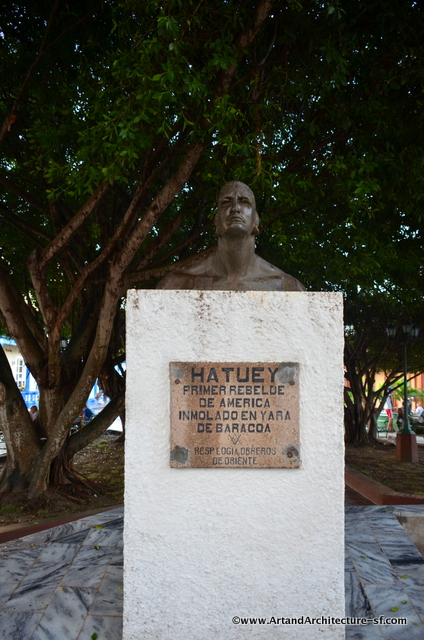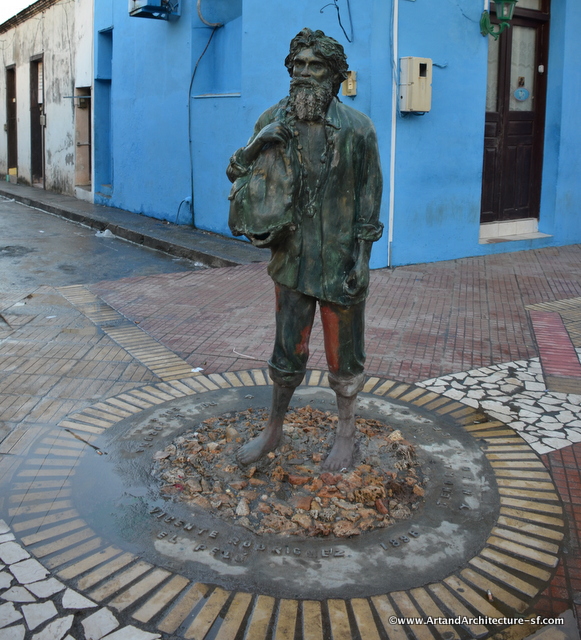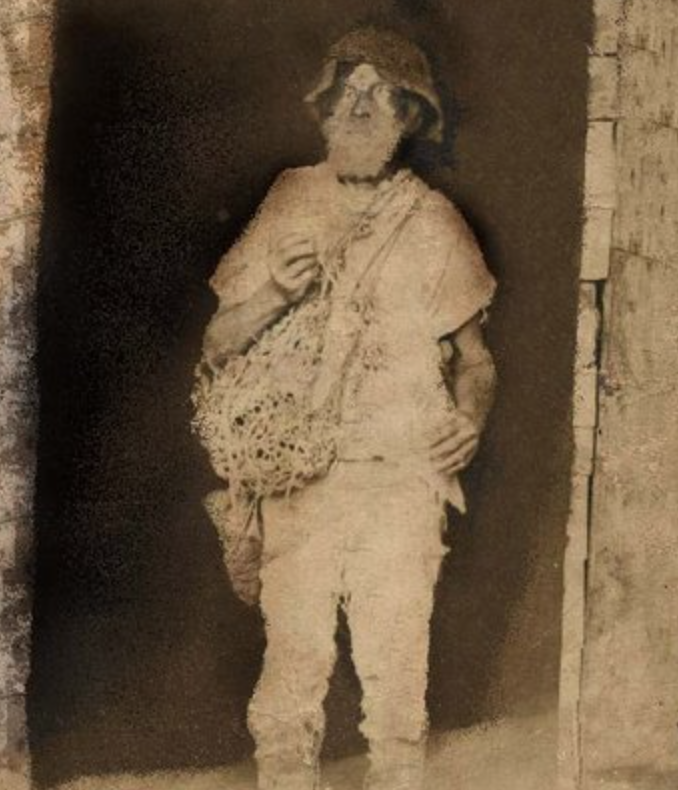October 2015
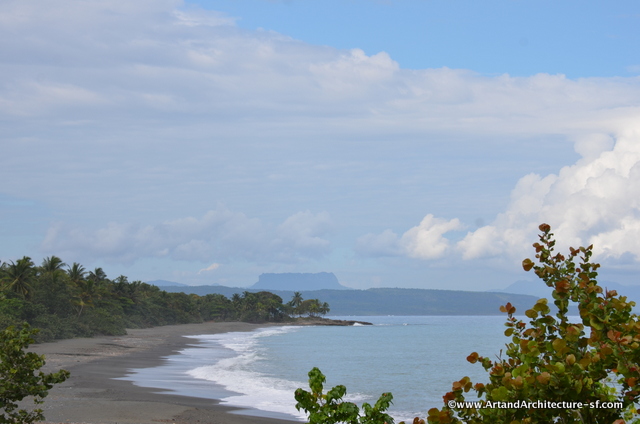
The white sandy beaches of Baracoa, Cuba with El Yunque in the background
Baracoa is the oldest city in Cuba and sits as the far east end of the island. Baracoa means “the presence of the sea” in the Aruaca language, which was spoken by the original inhabitants of this area, the Taino. The town of Baracoa was founded in 1511 and immediately became the political and religious capital, this changed however, twenty years later when the capital was moved to Santiago de Cuba.
We traveled to Baracoa from Guantanamo along the Costa Sur. This area is the most barren part of Cuba, it is almost desert-like, which becomes obvious when all of the fences are cacti and the beaches are rocky.
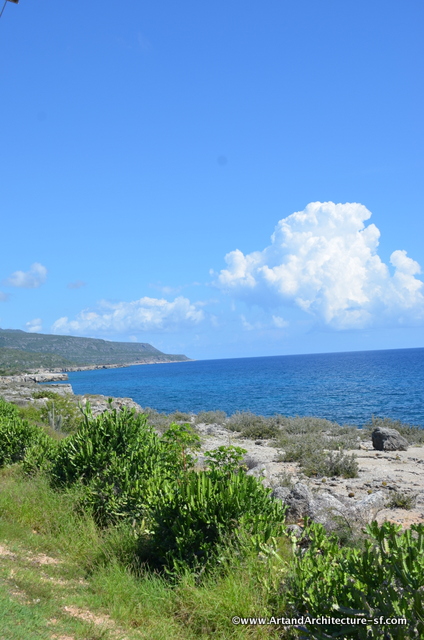
The Costa Sur south of Guantanamo
At the town of Cajobabo one turns inland to the drive through the Cuchillas de Baracoa mountains. You wander through these mountains via the Farola, which begins just as one crosses the Rio Jojo. Here the luxurious foliage begins to simply overwhelm ones senses. There are banana plantations, pines, royal palm trees and waterfalls everywhere. The Farola is a road. It is touted to be one of the engineering feats of recent Cuban history, however, it was actually started during the Batista regime, and was halted because he refused to pay a fair wage. Construction did not resume until the 1960s. The name came about because farola means beacon, and in some stretches, due to the lush vegetation of the area, it looks like a beam suspended in the air.
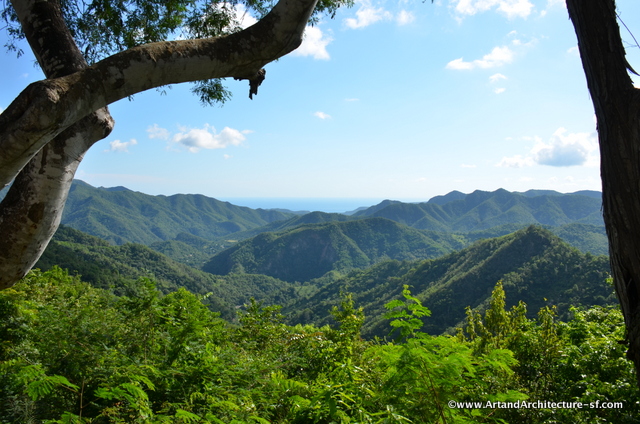
Driving on the Farola looking back to the Costa Sur
This lush forest continues down to the small bay where the city of Baracoa rests.
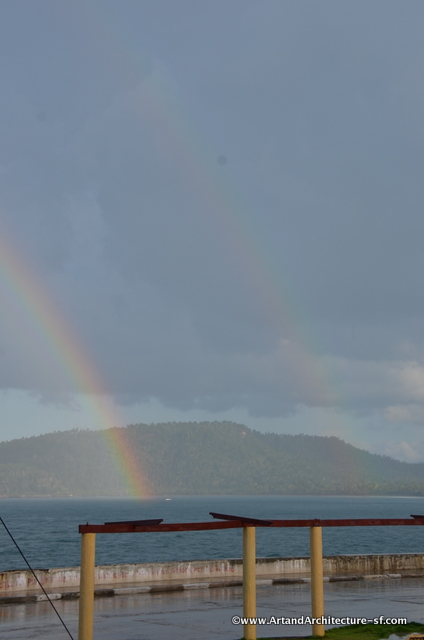
Baracoa is centered around its main square Parque Independecia.
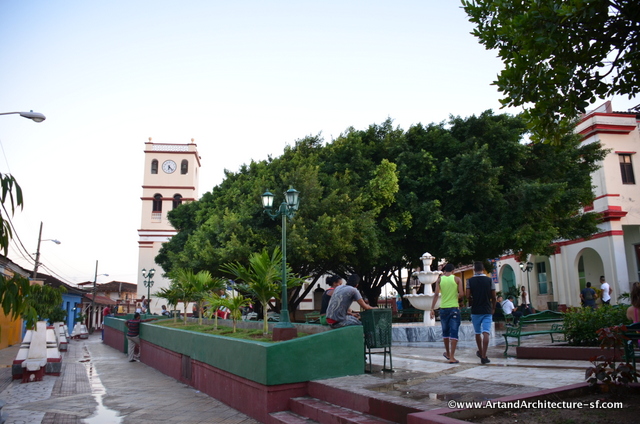
Parque Independencia
Here sits the Catedral de Nuestra Senora de la Asuncion. Built in 1512 and restored in both 1833 and 2012 it is the home of Crus de la Parra. This is said to be the cross brought to Cuba by Columbus, while the wood has been dated, and proves it is around 500 years old, the wood is also indigenous to Cuba, throwing the theory to the wind.
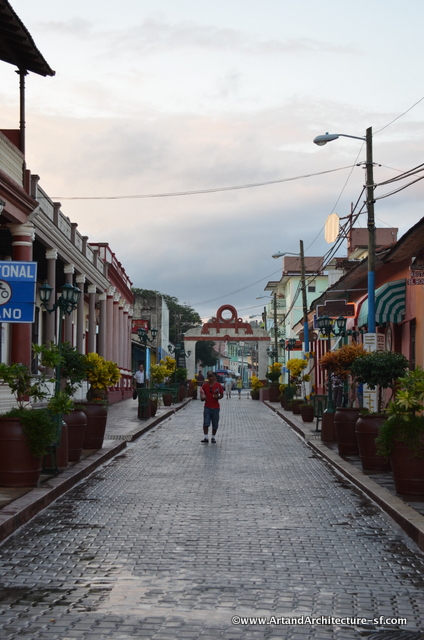
The pedestrian area around the Parque de Independencia

Statue of Christopher Columbus along the Malacon
Baracoa is famous for cucurucho’s and chocolate. There is a small café marked Casa de Chocolate, in the center square, that is more convenient for its good prices on liquor at the bar in the back than its actual distribution of chocolate bars. The chocolate factory is owned by the government, and while you can look in and see hundreds of chocolate bars and “bon-bons” it is, after all, a socialist country. So buying chocolate at the store and the concept of service are hit and miss at best
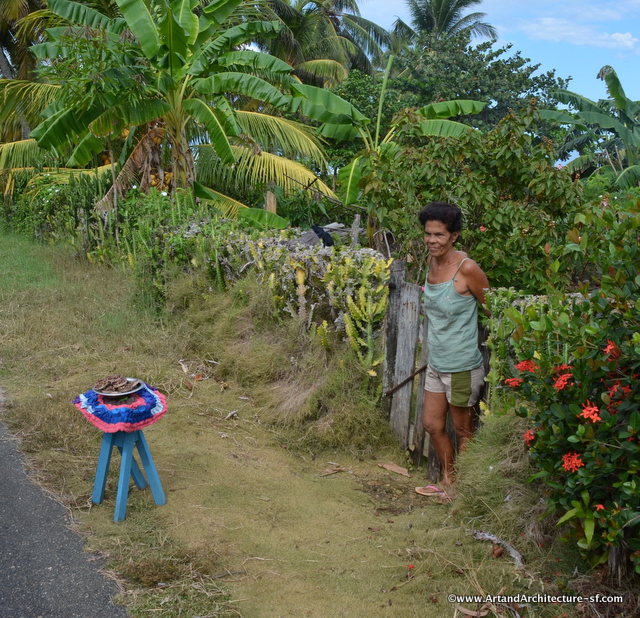
A woman selling pralines from her home.
The best way to enjoy the sweets of the area such as home made cucuruchos, chocolate layered with local coconut and these delicious praline like confections, are to find them in roadside stands sold by the locals.
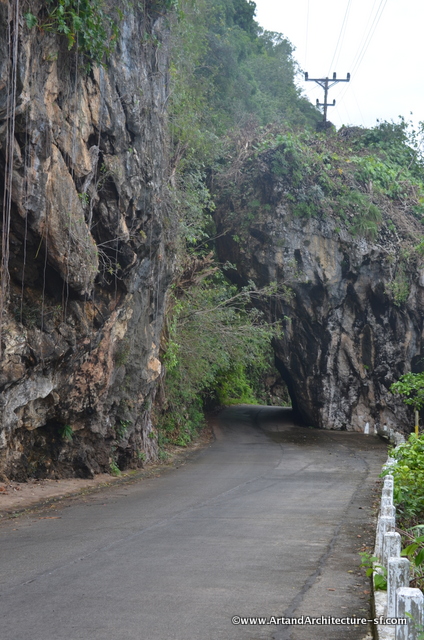
The road from Baracoa to Boca de Yumuri
While the town of Baracoa is lovely, the reason to visit this region is the wildlife and the beaches. Heading east from Baracoa towards Maias you find the Boca de Yumuri. Here people are anxious to take you out to a small island up the Yumuri River and provide a roast pig feast. This area is well known for its stunning ecology of tall canyon walls, lush beaches and a rich birdlife.
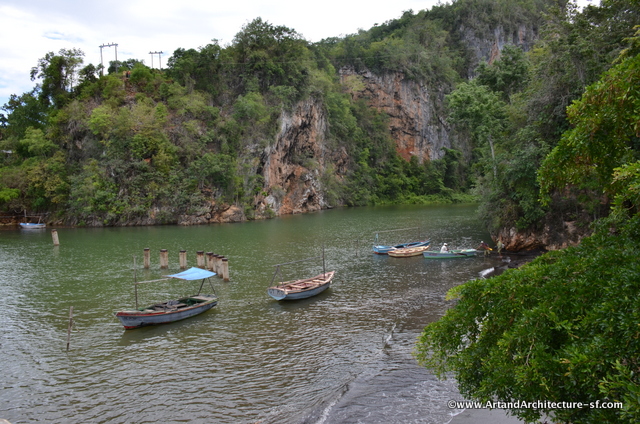
Boca de Yumari
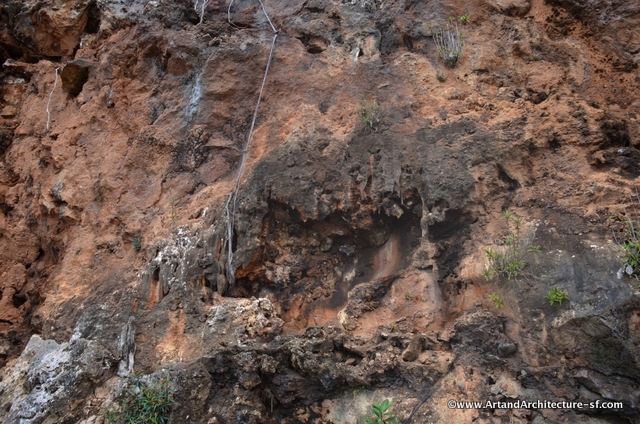
The cliffs around Rio Yumuri are dotted with caves and covered in tree roots and whatever else can cling to their sides.
Along this drive you will find traditional Bohios. These represent the original construction of the area, wood homes with palm leaf roofs.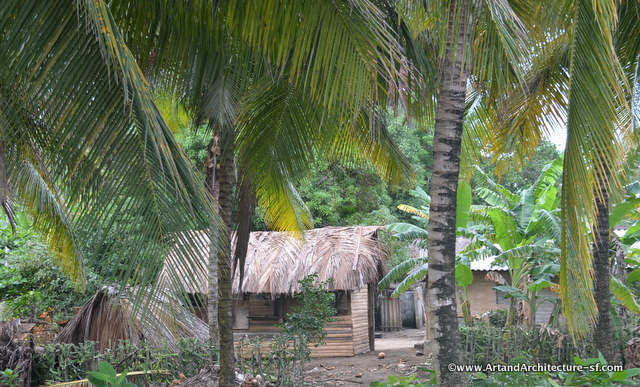
The drive on to Maias is a roller coaster ride through beautiful countryside with nary a person in sight.
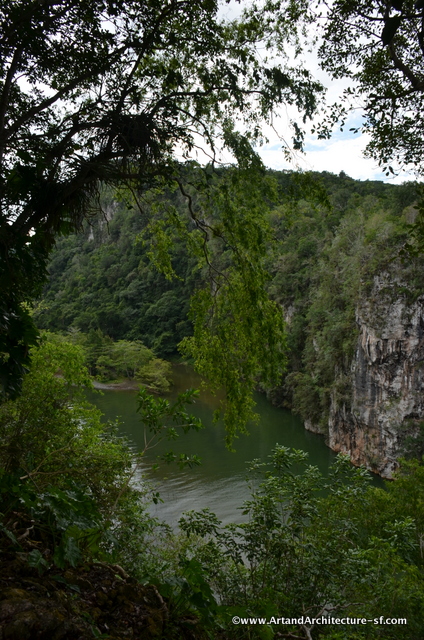
*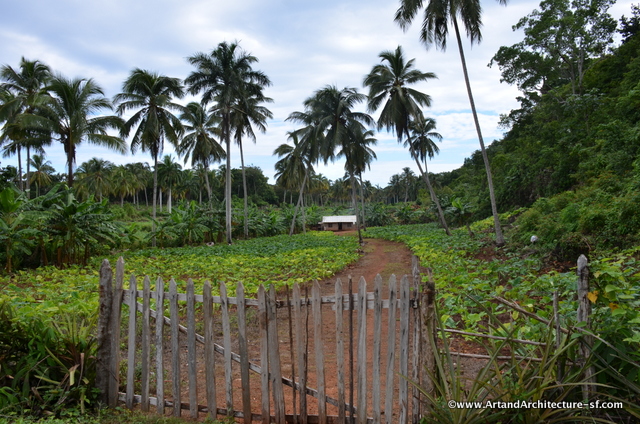
We even tripped upon an old cemetery. This was the first time I had seen a country cemetery in Cuba and was thrilled to explore for a while.
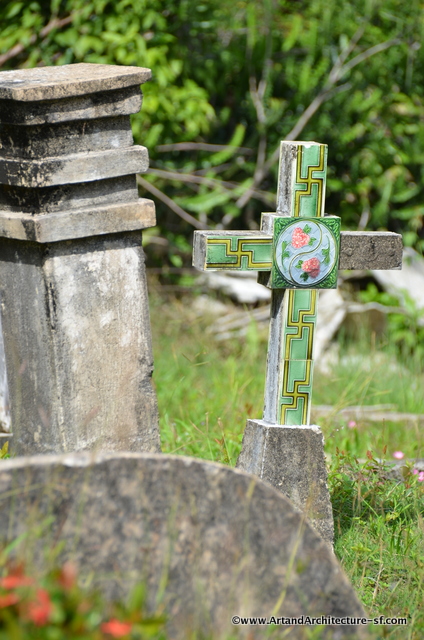 *
*
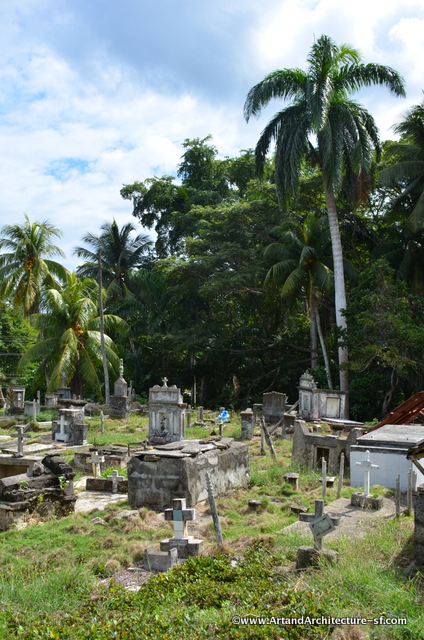
A symbol of the Baracoa area, and especially the Rio Yumuri, is the Polymita snail, or “Cuban land snail” or “painted snail”. They are illegal to sell since poaching has depleted them drastically, however, this does not stop local fellows, just outside of town, from doing so such as where I snapped this picture.
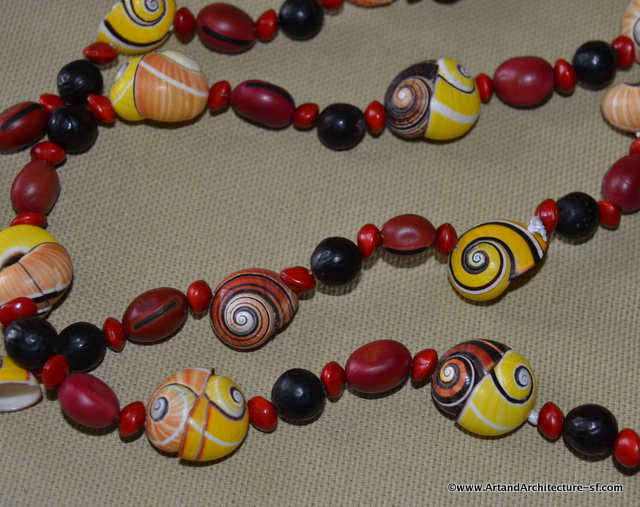
Their colors are many and have a legend attached. It is said that an Indian with no pearls to give to his love captured the colors of the universe. The green is for the mountains, the red is of the earth, the pink is for the flowers and the white is the foam of the sea, the yellow is the sun and the black is the night sky. The love sick Indian put these into the shells and presented them to his love. Apparently the Duchess of Windsor, in the 1950s had a pair made into earnings.
There are many Casa Particulars in Baracoa, but we stayed at the government hotel simply because it was right on the water. In fact it is across the street from the Hotel Russa, which is presently undergoing restoration.
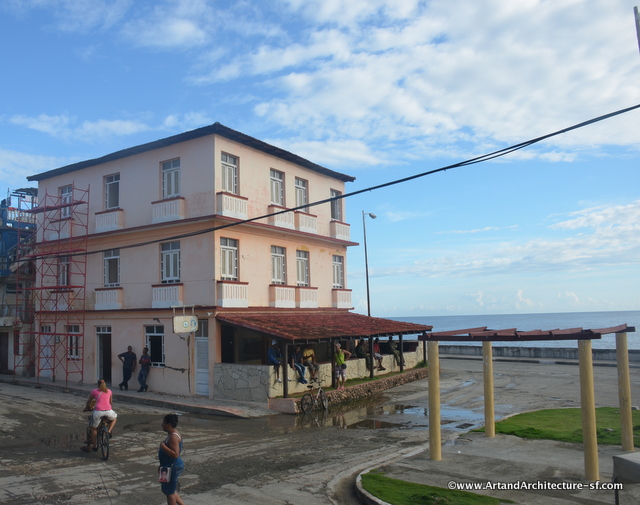
Hotel Russa was established by Russian émigré, princess and former dancer, Mima Rubenskaya or “La Rusa de Baracoa”. The princess settled in Baracoa after fleeing the 1917 revolution, she was six at the time. She converted her home into a hotel in 1953.
We were in Baracoa on October 28th. On the waterfront all of the school children were brought to pay tribute to Camilo Cienfuegos, a compadre of Castro whose plane went down in the early parts of the revolution. This is an annual event that takes place across Cuba.
The children listen to a long set of propaganda speeches and then throw red flowers into the sea as a tribute.
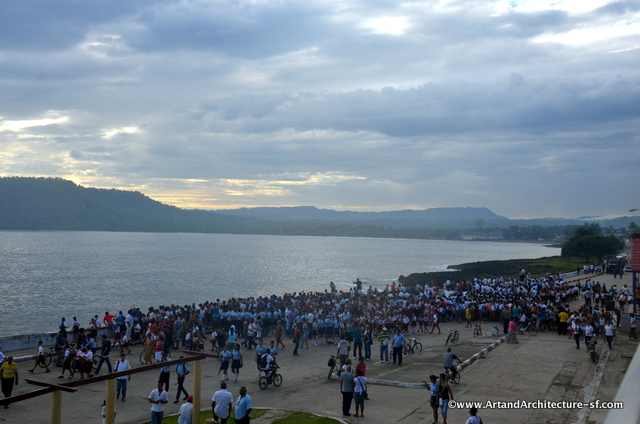
The children gather to listen to speeches
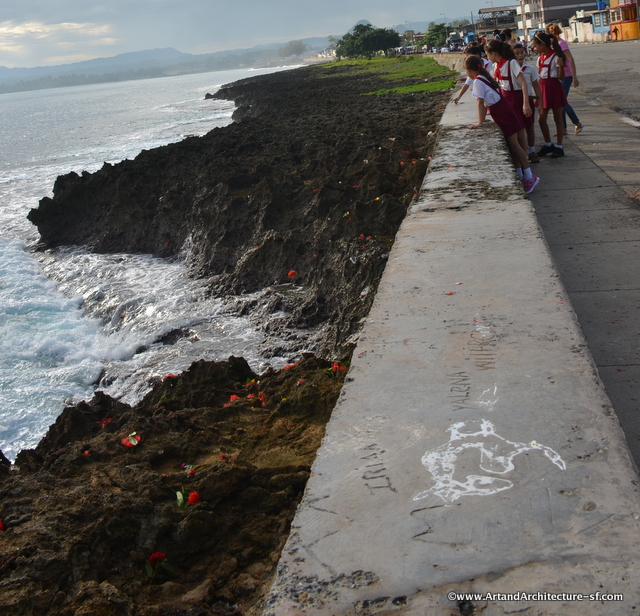
They then wait in long lines to throw their flowers into the sea
